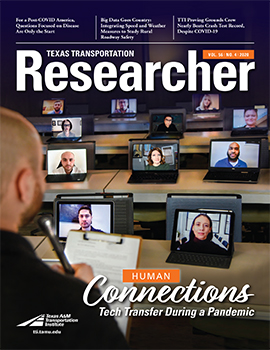CARTEEH Researchers Publish First Book on Traffic-Related Air Pollution and Human Health
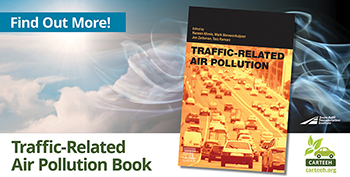
Researchers from TTI’s Center for Advancing Research in Transportation Emissions, Energy and Health (CARTEEH) recently published Traffic-Related Air Pollution, the first book to address traffic-related air pollution (TRAP) and its impacts on human health. TTI Associate Research Scientist Haneen Khreis served as lead editor alongside contributing editors Assistant Agency Director Joe Zietsman and Associate Research Engineer Tara Ramani. Mark Nieuwenhuijsen, research professor at the Barcelona Institute of Global Health, also contributed.
The book consists of 25 chapters by global experts on a variety of topics related to TRAP and health, including mitigation standards and regulations regarding TRAP and public health. Included in this approach are methods and tools for assessing and quantifying road traffic, vehicle emissions, air pollution, human exposure, biological reactions and population-based health impacts.
“Traffic-Related Air Pollution focuses on TRAP as one adverse, but modifiable, environmental exposure that significantly affects public health, especially in cities,” Khreis explains. “The book sets real-world implications alongside policy options, emerging technologies, and best practices and provides recommendations on ways to engage in discourse and policy to better address TRAP’s health impacts and its real societal costs.”
Curriculum in Development for Transportation Emissions and Health
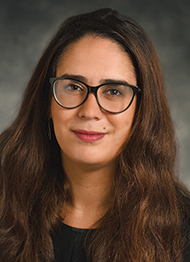
Researchers in TTI’s Center for Advancing Research in Transportation Emissions, Energy, and Health (CARTEEH) have developed a cross-disciplinary course titled Traffic-Related Air Pollution: Emissions, Human Exposures, and Health.
Transportation and health have historically been viewed as two distinct fields of education, research and practice, and there is a growing need for cross-disciplinary training at the intersection of transportation and health. TTI Associate Research Scientist Haneen Khreis led development of the new curriculum, which provides the basis for a graduate-level course offered by CARTEEH consortium member institutions or other universities. Numerous models, measurement techniques and datasets underlie the content to demonstrate the relationship between traffic activity and human health through exposure to air pollution. The course also explores the impacts of environmental regulation and real-world policymaking and practice, with numerous case studies from around the world.
Developers separated the course into three high-level, separate tracks to help tailor the information to participants’ existing knowledge in their respective fields while focusing on potential application in the classroom and beyond.
The health track is targeted at urban planners, transportation planners and engineers unfamiliar with public health issues. The transportation track is aimed at environmental epidemiologists and public health students and practitioners with a limited knowledge of transportation concepts. The third track (planning and policy) targets practitioners and policymakers, providing a more holistic overview of health and transportation and focusing on the link between science and policy as seen in real-world case studies. This track is also applicable to health and transportation students and researchers since it equips them with the knowledge needed for policy option generation and policy assessment.
Thirty-five of the 60 lectures are completed and available online at carteeh.org.
TTI’s Soheil Sohrabi Publishes AVs and Public Health Research Paper
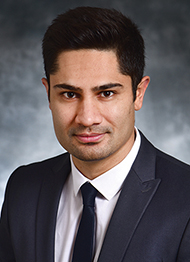
TTI Graduate Research Assistant Soheil Sohrabi recently published the research paper “Impacts of Autonomous Vehicles on Public Health: A Conceptual Model and Policy Recommendations” in the journal Sustainable Cites and Society. The paper’s authors also include Haneen Khreis, associate research scientist in TTI’s Center for Advancing Research in Transportation Emissions, Energy, and Health (CARTEEH), and Dominique Lord, Professor and A.P. and Florence Wiley Faculty Fellow in TTI’s Center for Transportation Safety.
The researchers developed a conceptual model to understand possible autonomous vehicle (AV) impacts on public health. The findings demonstrated that AVs can contribute to public health through 17 negative pathways (e.g., losing transportation-related jobs) and eight positive pathways (e.g., providing access to needed services for more people). The impacts of seven pathways — such as the effect on physical activity after AV deployment — remain unclear. Policymakers can use the research to make better-informed decisions regarding AVs and public health. It can also help educate the public and health sectors about AVs’ potential benefits and negative impacts.
Sohrabi worked on this research while he was a graduate research assistant at CARTEEH. He’s currently working in TTI’s Roadway Safety Division and is a Ph.D. student in Texas A&M University’s Zachry Department of Civil and Environmental Engineering. Sohrabi continues to work on this topic through a project that’s part of a Robert Wood Johnson Foundation grant to quantify safety and health concerns related to implementing AV technologies.
TTI’s Bullard and Chrysler Named Regents Fellows


The Texas A&M University System Board of Regents recently named TTI’s Senior Research Engineer Lance Bullard and Senior Research Scientist Sue Chrysler as Regents Fellows.
Bullard designs, develops and tests highway safety devices and has led various research projects for the National Cooperative Highway Research Program, the Federal Highway Administration, many state departments of transportation and private manufacturers. He leads TTI’s Roadside Safety and Physical Security Division and has served as principal investigator and engineer for the Texas Workforce Commission Automotive Equipment project that performs product reviews and inspections of vehicle modifications for physically disabled persons.
Bullard is grateful to his peers and colleagues at TTI regarding the nomination. “I’d like to thank all the people at TTI who have worked with me throughout the years,” Bullard says. “TTI is a fantastic collection of folks who provide all the support and backup necessary to achieve such an honor.”
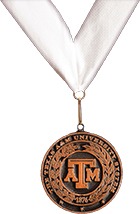
For more than 30 years, Sue Chrysler has applied an interdisciplinary approach to research, serving as principal investigator or task leader on more than 50 projects on various research topics, from visibility and distracted driving to traffic sign design and pavement marking effectiveness. She is the associate director of a National Safety University Transportation Center, Safe-D, which leverages disruptive technology to improve roadway safety. Throughout her career, Chrysler has been a thought leader in professional societies and standards committees, including several National Academy of Sciences Transportation Research Board committees.
“I am a cognitive psychologist by training, studying how people think, learn and react to the world,” Chrysler notes. “Transportation is a perfect field to apply my skills and training because people are involved with so many different aspects of the transportation system as drivers, pedestrians, bicyclists, motorists and transit users.”
The Regents Fellow Service Award Program began in 1998 and is the highest A&M System honor.
